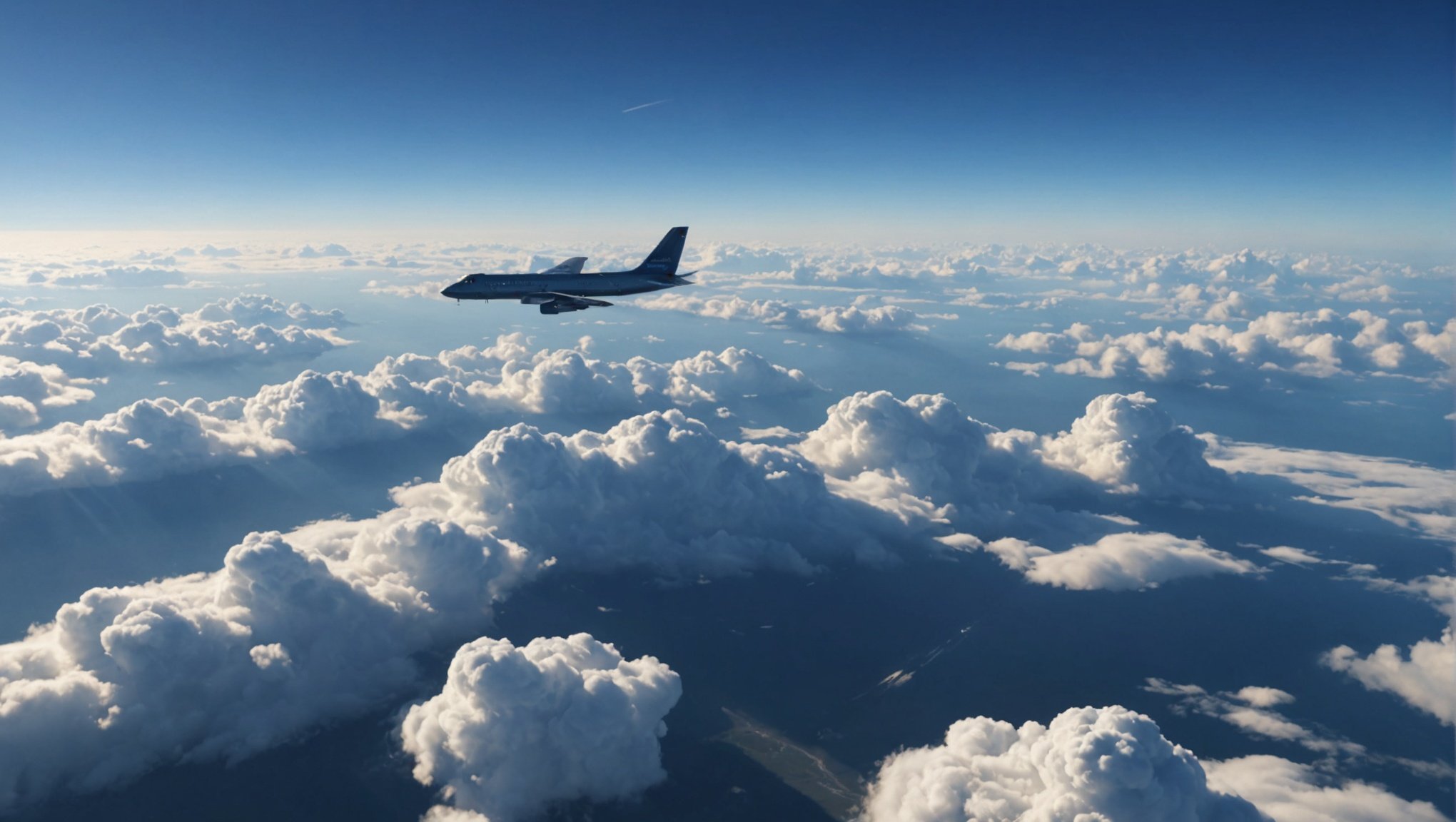Flight simulator enthusiasts and professionals alike often seek the most immersive experience possible. With advancements in technology, particularly Microsoft Flight Simulator (MSFS), creating realistic cloud formations has become a pivotal aspect of enhancing flight simulation experiences. Today, we delve into the key factors that contribute to the creation of these lifelike cloud formations in flight simulators.
The Importance of Realistic Cloud Formations
In the world of flight simulation, the experience isn’t just about the aircraft but also about the environment in which it operates. The introduction of cloud formations not only beautifies the virtual skies but also significantly impacts flight training and general aviation exercises. For instance, pilots in training use these simulations to understand and adapt to various weather conditions. Therefore, creating realistic clouds is crucial for both virtual reality simulations and real-world applications.
This might interest you : What are the challenges of integrating haptic feedback into mobile AR games?
Meteorological Accuracy
To design realistic cloud formations, developers must have a deep understanding of meteorology. Clouds in the real world are influenced by complex weather patterns and atmospheric conditions. By integrating real-time weather data, Microsoft Flight Simulator can generate cloud formations that are accurate and dynamic. This means clouds shift and evolve as they would in real life, providing an authentic experience.
Artificial intelligence (AI) and machine learning play a substantial role in this process. These technologies analyze vast amounts of meteorological data to predict and simulate cloud behavior accurately. By incorporating AI, developers ensure that clouds not only look realistic but also behave in ways that pilots would expect in various weather scenarios.
In parallel : What are the key factors for creating realistic damage models in racing simulation games?
Graphical Fidelity and Rendering Techniques
Creating visually stunning and realistic clouds requires advanced rendering techniques. Microsoft Flight Simulator utilizes state-of-the-art graphics engines to produce high-fidelity cloud formations. These engines use sophisticated algorithms to simulate the light scattering, shadowing, and blending effects that occur in real life.
Volumetric rendering is one technique used to create three-dimensional cloud structures. Unlike older methods that rely on flat, two-dimensional textures, volumetric rendering allows clouds to have depth and realism. This technique makes it possible for clouds to interact with light in a more natural way, casting dynamic shadows and changing appearance based on the time of day.
Real-Time Weather Effects
One of the most impressive aspects of modern flight simulators is their ability to simulate real-time weather effects. By incorporating live weather data, Microsoft Flight Simulator ensures that cloud formations are always up to date, reflecting current atmospheric conditions. This feature is particularly beneficial for flight training, as it allows pilots to practice in conditions that mirror those they might encounter in the real world.
Moreover, real-time weather effects enhance the immersion of the experience. Flying through a virtual sky that mirrors the current weather in your location adds a layer of realism that static weather patterns cannot provide. This dynamic weather system is a game-changer for both casual gamers and professional pilots.
Integration of Third-Party Add-Ons
The ability to integrate third-party add-ons has always been a significant advantage of Microsoft Flight Simulator. These add-ons often include enhanced cloud textures, new weather effects, and additional environmental details that improve the overall experience. By allowing third-party developers to contribute, the community benefits from a wider range of realistic and detailed cloud formations.
Third-party developers often specialize in specific areas, such as cloud dynamics or atmospheric physics, bringing unique expertise to the table. These add-ons can be tailored to specific needs, whether it’s for general aviation training, commercial pilot exercises, or simply enhancing the visual appeal of the simulator.
Advanced Technologies in Cloud Simulation
Several advanced technologies contribute to the creation of realistic cloud formations in flight simulators. These technologies not only improve the visual aspects but also enhance the functional and operational realism of the simulation.
Machine Learning and Artificial Intelligence
Incorporating machine learning and artificial intelligence (AI) into cloud simulation has revolutionized the industry. These technologies can analyze vast amounts of weather data and learn from it, improving the accuracy and realism of cloud formations over time. They can predict weather patterns, simulate cloud behavior, and even adapt to changes in real-time.
For instance, AI can analyze historical weather data to create more accurate cloud models, while machine learning algorithms can predict how these clouds will evolve. This leads to more dynamic and realistic cloud formations, enhancing the overall flight simulation experience.
Virtual Reality Integration
Virtual reality (VR) has taken flight simulation to new heights. By integrating VR with realistic cloud formations, developers can create an immersive experience that closely mimics real-world flying. Pilots can experience the sensation of flying through clouds, feeling the changes in light and shadow, and even experiencing turbulence caused by cloud formations.
VR provides a level of immersion that traditional screens cannot match. When combined with realistic cloud formations, it allows for more effective flight training and a more enjoyable experience for flight sim enthusiasts. The sensation of flying through a cloud, with all the visual and atmospheric effects, adds a new layer of realism to the simulation.
Realistic Cloud Dynamics
To create truly realistic cloud formations, developers must understand and simulate cloud dynamics. This includes how clouds form, evolve, and dissipate. By replicating these processes, Microsoft Flight Simulator can create cloud formations that change and evolve naturally.
Realistic cloud dynamics are essential for creating an authentic flying experience. Pilots must understand how clouds behave in different conditions, such as how they form in warm, rising air or how they dissipate in cooler, descending air. By simulating these processes, flight simulators can provide a more accurate and educational experience.
Atmospheric Physics
Understanding and simulating atmospheric physics is another key factor in creating realistic cloud formations. This includes modeling how light interacts with clouds, how clouds affect visibility, and how they influence aircraft performance. By accurately simulating these factors, Microsoft Flight Simulator can create cloud formations that not only look realistic but also behave in ways that pilots would expect.
Atmospheric physics also plays a crucial role in creating the visual effects of clouds. This includes how light scatters through clouds, how shadows are cast, and how clouds change appearance based on the time of day and weather conditions. By accurately simulating these effects, developers can create cloud formations that enhance the overall visual realism of the simulation.
The Role of Community and Feedback
The flight simulation community plays a crucial role in the development and improvement of realistic cloud formations. Microsoft Flight Simulator has a large and active community of enthusiasts, developers, and professional pilots who provide valuable feedback and suggestions. This feedback helps developers identify areas for improvement and implement new features that enhance the overall experience.
Community Contributions
The community often contributes to the development of new cloud formations and weather effects through third-party add-ons. These add-ons can include new cloud textures, weather effects, and atmospheric details that enhance the overall realism of the simulation. By allowing community contributions, Microsoft Flight Simulator can benefit from a wider range of expertise and creativity.
Feedback and Continuous Improvement
Feedback from the community is essential for continuous improvement. Developers often rely on this feedback to identify bugs, improve existing features, and implement new ones. By actively listening to the community, developers can create a more immersive and realistic flight simulation experience.
Community feedback also helps developers understand what aspects of cloud formations are most important to users. This can include visual realism, dynamic behavior, or specific weather conditions. By focusing on these areas, developers can create cloud formations that meet the needs and expectations of their users.
Collaboration with Experts
Collaboration with meteorologists, pilots, and other experts is another crucial factor in creating realistic cloud formations. These experts provide valuable insights into cloud dynamics, weather patterns, and atmospheric physics. By working closely with these experts, developers can ensure that their cloud formations are not only visually stunning but also scientifically accurate.
Creating realistic cloud formations in flight simulation games is a complex and multifaceted process. It requires a deep understanding of meteorology, advanced rendering techniques, machine learning, and artificial intelligence. By integrating these technologies, Microsoft Flight Simulator can create cloud formations that are visually stunning, dynamically realistic, and scientifically accurate.
The role of the community and feedback is also crucial in this process. Community contributions and feedback help developers continuously improve and enhance the realism of cloud formations. Collaboration with experts ensures that the cloud formations are not only visually appealing but also realistic and accurate.
In conclusion, the key factors in designing realistic cloud formations for flight simulation games include meteorological accuracy, advanced rendering techniques, real-time weather effects, integration of third-party add-ons, and the use of advanced technologies like machine learning and artificial intelligence. By focusing on these factors, developers can create cloud formations that provide an immersive and realistic flight simulation experience.











